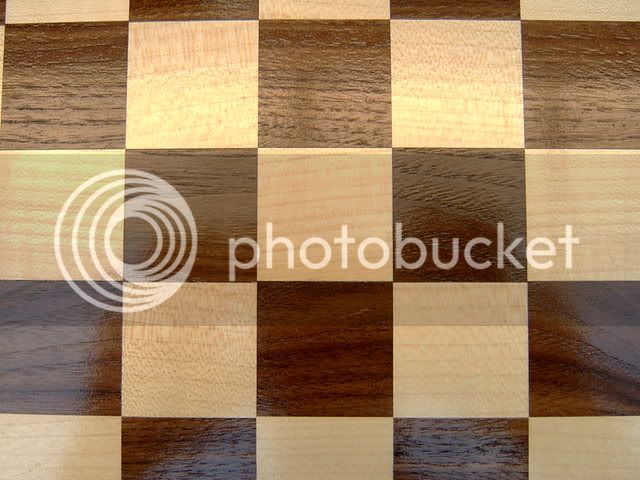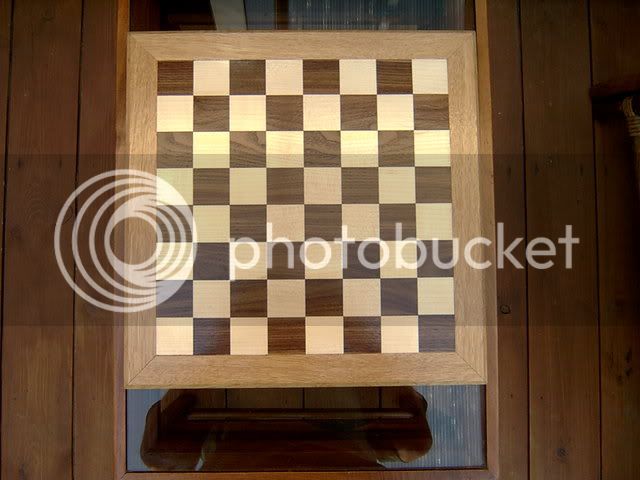neilyweely
Established Member
OK. so I am making up a few chess boards for xmas presents.
So far I have managed to cut all the pieces of wood (elm and walnut) to pretty much the same size squares, and am going to mount them on a piece of ply or mdf, then run them once thru the thicknesser before finishing. All the pieces are running grainwise the same direction, so I do not envisage this being a problem.
My question is ' Will it be?" and does anyone have any useful suggestions for me?
I guess I kinda tried to make this as easy as possible, and hoped that using the thicknesser would take all the pita out of matching up exactly all the bits!! The RAS managed to get them all the same size width and length ways (48mm x 48mm) but the elm was a tad thicker than the walnut.
I thought of using some oak to put a nice little trim round the edges, maybe with some design routed on, maybe nice and simple ( I do sometimes think I am guilty of over-doing it slightly!)
I will take some pics if and when I feel it is acceptable to show amongst such esteemed woodworking!!!
Any help appreciated folks (finishes, tricks etc....)
Ta
Neil
So far I have managed to cut all the pieces of wood (elm and walnut) to pretty much the same size squares, and am going to mount them on a piece of ply or mdf, then run them once thru the thicknesser before finishing. All the pieces are running grainwise the same direction, so I do not envisage this being a problem.
My question is ' Will it be?" and does anyone have any useful suggestions for me?
I guess I kinda tried to make this as easy as possible, and hoped that using the thicknesser would take all the pita out of matching up exactly all the bits!! The RAS managed to get them all the same size width and length ways (48mm x 48mm) but the elm was a tad thicker than the walnut.
I thought of using some oak to put a nice little trim round the edges, maybe with some design routed on, maybe nice and simple ( I do sometimes think I am guilty of over-doing it slightly!)
I will take some pics if and when I feel it is acceptable to show amongst such esteemed woodworking!!!
Any help appreciated folks (finishes, tricks etc....)
Ta
Neil


































